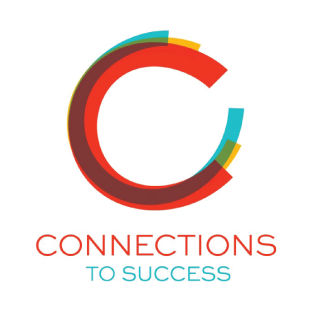 Our second in a series on time management for meetings.
Our second in a series on time management for meetings.
In our last blog, we shared some of the practices our clients often use to create meetings that don’t suck.
Today, we’ll share the systemized agendas we’ve developed over time to help organizations maintain productive meetings. Hopefully, you’ll find these useful as a starting point for your own team.
First things first.
There are only three types of productive meetings:
- To solve a problem
- To communicate Information or
- To brainstorm.
Your own time management meeting process should require team members to think through what they hope to achieve in their meeting, using one of these three goals. If a meeting requires more than one of these goals to be accomplished, chances are additional meetings may be needed to optimize productivity.
Now that you’ve established the type of meeting, how can you make each meeting more efficient.
Solve a Problem agenda
Agendas for meetings with the goal of solving a problem should look like this…
- State the goal. We need to create a solution for ___________.
- Establish an objective criteria for deciding. Based on the overall business goals, what three factors will be used to evaluate the best options? Create this criteria before emotions come into play.
- Define the Issues. Clarify WHY this problem needs to be solved.
- How does it affect the customer, internally or externally. Define the implications of this problem for your customers or for your employees. Are there budget restrictions? Does it contradict customer expectations?
- Share Perspectives. Let team members share their perceptions of the situation, their needs, and desires. But don’t forget, this meeting is about making a decision. If there is further information to be shared or other options to be generated, you may need to transition, or reschedule, to a different type of meeting.
- Review options. Clearly lay out all the solution options currently available. Ask for additional thoughts. New ideas are welcome. If these new ideas have validity and are actionable, then add them to the mix. However, if solution options have not been generated yet or more ideas are needed, this is not the meeting. Use the time to schedule a brainstorming meeting instead.
- Evaluate options and reach agreement. State the goal again and grade the options based on the objective criteria you established in step 2.
- Develop next steps. Develop an action plan, assign owners to the actions and schedule a follow-up review meeting.
Communicate Information Agendas
There are two types of Communicate Information meetings. The weekly status meeting/sales meeting and the announcement meeting (or what we like to call, the Kickoff meeting). Because it’s the simple sharing of information, this meeting can become easily derailed. We’ll address the Kickoff Meeting first.
Type 1: Kickoff Meeting Agenda
Here’s how to keep it focused.
- State the goal. This could be defining action steps for the project or the action steps for the planning of an initiative. Whatever the goal, write it on your meeting board.
- Share the background. What’s happened that has led to this conversation?
- State the purpose. How does this information affect the company, the customer or the employees?
- Ask for feedback. Ask if any one has input or questions.
- Define next steps. If there are action steps to be taken, outline the action plan, assign owners to the actions and establish a follow-up review meeting.
Type 2: Status Update Meeting Agenda
This may be the most common meeting in your organization. To review the status of a project or projects. Because it’s a weekly meeting, it’s the meeting few people plan for making it the least efficient for time management.
There was a time when we would slowly work through an entire list of projects, even though many of the updates were things like “project on hold” or “proposal out to client” with no actionable necessities.
These meetings are tedious. The tedium can cause you or your team to miss important milestones or never arrive at obstacles that may be slowing or stalling the project.
We’ve adopted a variations of the Gazelles Systems. Here’s our agenda. Give it a try.
- Success! We adopted this from one of our clients: Start the meeting by going around the table and having everyone share a win in their life from the past week. It could be business related or personal, but establishes a positive mindset for everyone.
- State of the Company.
- Review company priorities and KPIs
- Celebrate related victories
- Identify priorities that may not be on target.
- Discuss action plans by assigning responsibilities.
- State of the Team.
- Each team member reviews their to do list from the last Status Update meeting (victories, accomplishments and issues)
- Each outlines their plan and three objectives for coming week.
- Finally, each should share any obstacles inhibiting them to allow the team to move projects, create solutions or pitch in to assist. If assistance is needed or a deadline is in danger of being missed, now is the time to ask for help or resources.
- State of the Customer.
- Share and discuss any customer feedback.
- Identify areas that are not as successful and determine next steps needed to develop a process to correct issues. This could be assigning a team, holding a brainstorming meeting or investing in new technology.
Brainstorming Meeting Agenda
Brainstorming is a unique type of meeting with it’s own unique time management challenges. Most fail for three key reasons:
- Lack of preparation
- Unreasonable expectations
- Lack of action
Since “brainstorming” has always been loosely defined as a creative pursuit, many feel it should be spontaneous. After all, painters and musicians simply sit down, pray to their respective muse and begin writing, correct?
Brainstorming should instead be interpreted as a “problem-solving” session. So it’s important to download the brainstorming team with enough information that they can brainstorm individually prior to collectively.
Because of this ill-conceived definition, participants feel the pressure to “be creative” in order to create value. We eliminate this feeling of pressure by actually moderating brainstorming sessions utilizing a variety of exercises. With the support of structure and processes, participants feel they are a valuable contributor and they have the focus to problem solve creatively.
We also utilize our exercises and processes to ensure there is the right balance of problem-solving and actionability. Too many brainstorming meetings end up with a wall peppered with great ideas that never get acted upon.
However, brainstorming meetings can be utilized for a variety of problem-solving activities, not just key initiatives, so we’ll define step you can take to make them productive.
How to get started.
The most important step actually occurs before the meeting.
Assign A Facilitator: One person should be the master of ceremonies to make certain the agenda is followed and the focus stays on the goal. This person should plan the meeting and provide participants with all the necessary background information prior to the meeting.
Pre-Meeting. The most effective brainstorming isn’t a surprise. It’s important to encourage individual brainstorming prior to the group setting. Prior to our facilitated brainstorming meetings, we provide all participants what we call the Brainstorming Brief. It contains the background, perspectives and customer insights needed to brainstorm on the issue individually.
State the goal. Brainstorming meetings have the same primary goal: Generating as many solutions to a problem as possible. However, it’s key to clearly define what needs to be defined by the close of the meeting. For example: “At the end of this meeting, we will have three ideas to begin a R&D viability study.”
State the rule: Every idea is presented without comment, evaluation or criticism. Today, we’re staying focused on ideas, no decisions.
Write the rule on the meeting board: It’s important to refer back to the rule any time the meeting starts to stray.
Define the Why: Provide all participants with a simple, clear explanation of how this brainstorming meeting fits into the overall plan for the project.
Brain Stretching: Before any exercise, it’s important to stretch. It warms up the muscles. Stretch everyone’s brain muscles before you begin to exercise too. Initiate a fun, stimulating warm-up exercise. An exercise that helps break the organizational paradigms and get to know the group. We have several, so call us if you’d like some ideas.
Generating ideas. Keep the meeting interesting. Don’t let the brain muscles fall into a rut. This is accomplished by breaking the meeting into easy-to-manage chunks and utilizing creative exercises to keep their thoughts focused. Again, if you need some ideas for exercises, give us a call.
Use a parking lot. Create a space on your whiteboard to act as your parking lot. Conversations may veer off-course or into controversial territory, so if side conversations are occurring, stop and record the issue on your parking lot. You want everyone to recognize these are important issues, but you don’t want to derail the purpose of your meeting. Revisit later.
Filter. Now that you have stacks of Post-It notes on the wall, don’t just gather them and let them collect dust on the corner of someone’s desk. These are your raw materials and need to be hammered into an actionable activity.
- Group the ideas and eliminate redundancies
- Allow participants to clarify or explain, if necessary.
- Filter the ideas based on things like costs, speed to market, brand appropriateness, ROI, customer focus and importance.
- Ask participants to rank the “best” ideas.
Prioritize. Evaluate the rankings, attempt to reach consensus and prioritize the ideas.
Define next steps. If there are action steps to be taken, outline the action plan, assign owners to the actions and establish a follow-up review meeting.
Hopefully these ideas have been helpful for your organization. We’d love to here your ideas too. Please feel free to share processes that are effective for your company!


